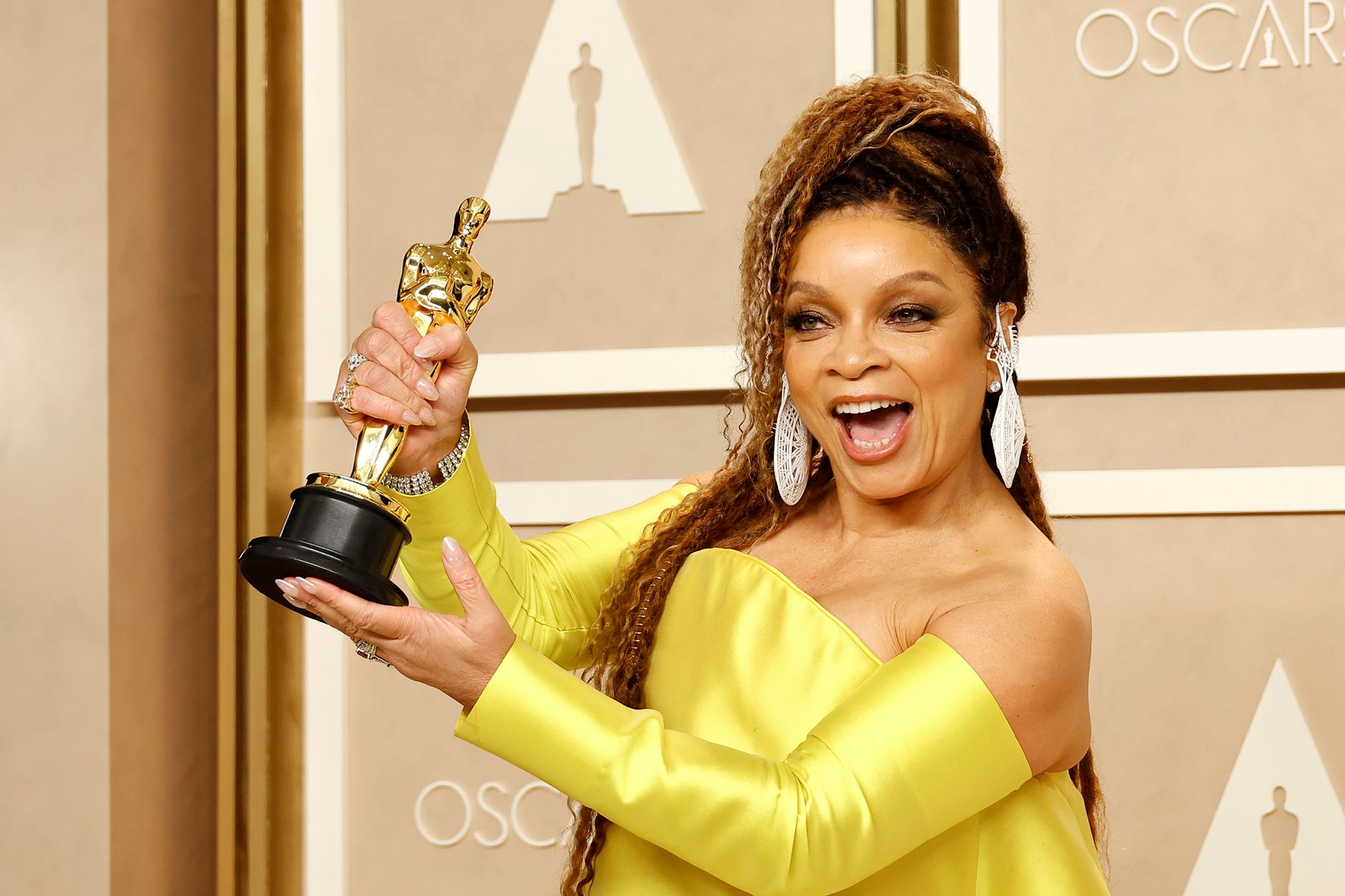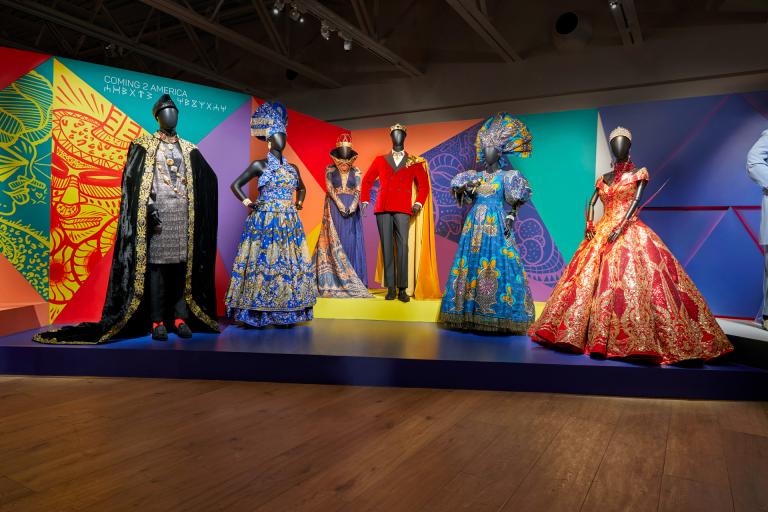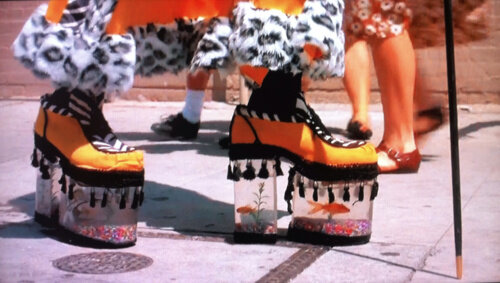Feature: CHF’s Ruth E. Carter Interview Celebrates Black History Via Costumes
Costume designer Ruth E. Carter spoke at the Music Box Theatre in June during the Chicago Humanities Festival about her rich film career and her historic Academy Award wins for Black Panther and Wakanda Forever.
Carter made history as the first African American artist in that category, and the first Black person to win multiple Oscars in any category, following four Oscar nominations for Malcolm X and Amistad. Carter also received the 2019 Costume Designer’s Guild Career Achievement Award for her rich, 50-strong filmography, including Selma, Marshall, The Butler, Coming 2 America, and Do the Right Thing, collaborating with leading Black directors like Spike Lee, John Singleton, and Ryan Coogler. In 2021, she was the second costume designer to receive a star on the Hollywood Walk of Fame.

“I’ve always been a storyteller,” the jovial and vivacious Carter said to the large, enthusiastic crowd. She spoke with Jacqueline Stewart, director and president of the Academy Museum of Motion Pictures, about her new book The Art of Ruth E. Carter: Costuming Black History and the Afrofuture, as well as her fortuitous career path.
Afrofuturism was a recurring theme throughout the lively 90-minute chat. Her origin story began as an actor at Hampton University, where she performed plays by Lorraine Hansberry and other playwrights of color. She’s grateful for that training, so she can understand the journey of the performers she now dresses, and knows how to break down a script. Carter also fell in love with African American history when she dressed in character as a reenactor at Colonial Williamsburg. But she’s happy where she ended up. “Now I get to play all the characters,” she said.

After college, Carter left Virginia and moved to Los Angeles. She became a gopher and technical theater factotum for a small dance company when she met Spike Lee, who encouraged her to work on student films to refine her craft. Soon, he called her to costume his 1988 film School Daze. Before she knew it, she was in Egypt with Lee to film the hajj scene for Malcolm X in 1992. She also remembered filming Amistad off the Eastern Seaboard with Steven Spielberg in 1997, and laughed at the iconic status that her goldfish platform shoes achieved in the 1988 blaxploitation film parody I’m Gonna Git You Sucka.

Carter’s currently dressing Mahershala Ali for his role in the upcoming Blade franchise reboot, and she notes him saying that “my first fitting is my first rehearsal.” She recalled other memorable collaborative moments from fittings with leading actors. Chadwick Boseman said the first try at T’Challa's formal embroidered jacket “felt like the Commodores,” so she redesigned. She also engineered a removable face mask for his Black Panther helmet so that he could breathe, something he couldn’t do well in his first hastily made suit (by someone else) when his character was introduced into the Marvel Cinematic Universe. She relayed that she sculpts muscle suits in clay, then casts them in rubber.
She worked with Angela Bassett to design Queen Ramonda’s looks in both Black Panther movies, 3-D printing many of her intricate headdresses and dramatic neck pieces. The Afrofuturist world of Wakanda, including fine needlework, jingling beads and multiple layers, was inspired by Africa’s many tribes, including the Maasai, Zulu, and Turkana. Specifically, Wakanda’s fierce female army, the Dora Milaje, was based on the real Ajojie warriors.
Researching the Mesoamerican Mayan civilization for the watery Talokanil people in Wakanda Forever was intense, but welcome, as Carter had heard an early rumor that most of the underwater scenes would be created solely by CGI, not in reality. She said she felt like she was back in her historic Williamsburg days, and even created a naval ranking system based on piercings. Carter also wanted the armor to feel like jewelry, so she started working with jewelers while on location to build specific pieces for specific performers, including Douriean Fletcher, who became the first jeweler in the Motion Picture Costumer Union.
Recycled elements of vintage works excite her, but not fast fashion. In 2020, she created the Ruth Carter Capsule Collection for retailer H&M, but prefers the historical or avant-garde. An exhibit of her work is slated to come to the DuSable Black History Museum and Education Center this fall, where Chicago can continue to celebrate Ruth Carter Forever.
Check out upcoming Chicago Humanities Festival programs, including:
Zadie Smith on her new historical novel The Fraud on 9/19
Social activist Naomi Klein on “The World of Digital Doppelgangers” on 9/19
Actor Henry Winkler interviewed about his memoir by "Barry" co-star D’Arcy Carden on 11/4
Did you enjoy this post and our coverage of Chicago’s arts scene and sometimes beyond? Please consider supporting Third Coast Review’s arts and culture coverage by making a donation by PayPal. Choose the amount that works best for you, and know how much we appreciate your support!
